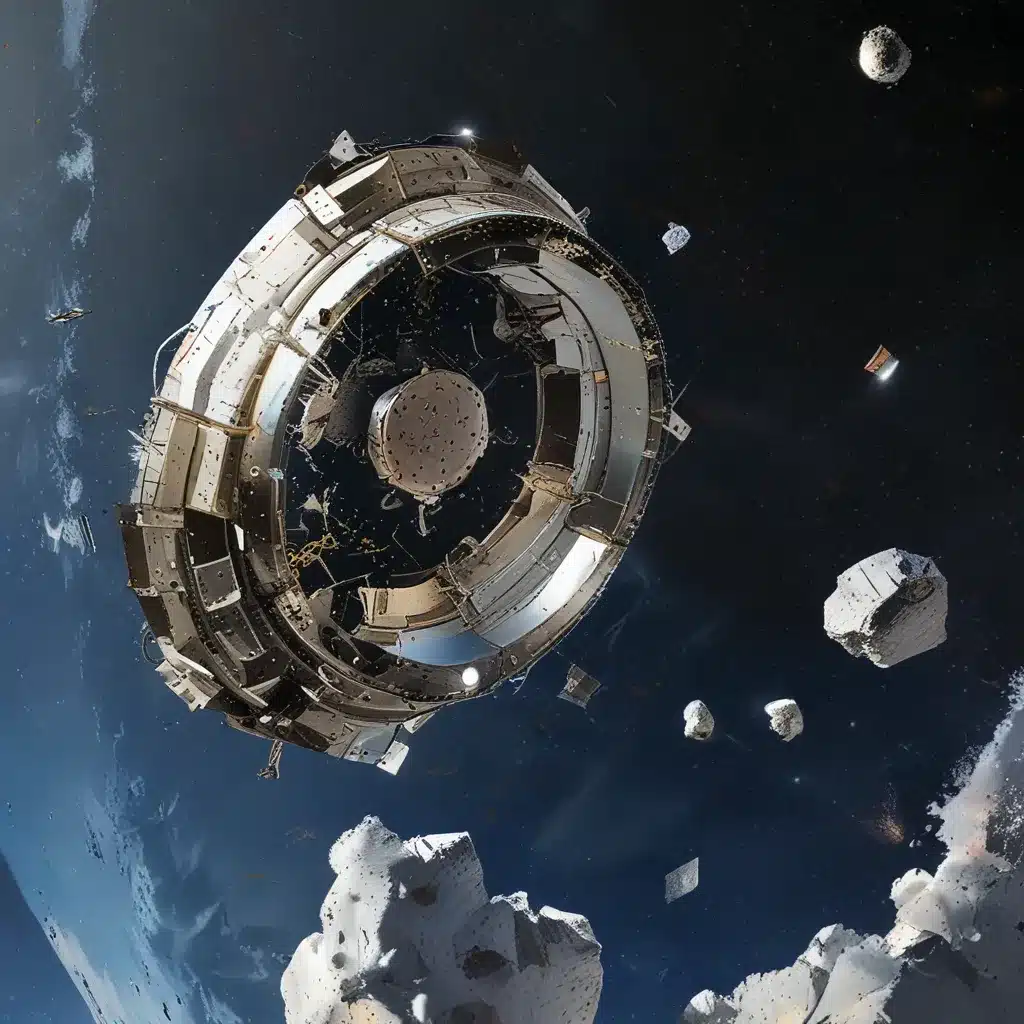
Blasting Off into the Great Unknown
As a tech-savvy individual living in the UK, I’ve always been fascinated by the wonders of space exploration. From the awe-inspiring images of distant galaxies to the engineering marvels that propel our satellites into orbit, the final frontier has captured my imagination time and time again. However, amidst all the excitement and progress, there’s a growing concern that we’ve inadvertently created a major problem – space junk.
You see, over the past six decades, we’ve been launching an ever-increasing number of spacecraft, satellites, and other objects into the void above our heads. And while these technological marvels have transformed our lives in countless ways, from enabling global communication to revolutionizing weather forecasting, they’ve also left behind a rapidly accumulating trail of debris.
According to NASA, there may be as many as 170 million pieces of space junk currently orbiting our planet, ranging from tiny flecks of paint to massive, defunct satellites. And the scary part? Even the smallest of these objects, traveling at speeds of up to 17,500 mph, can cause catastrophic damage to our precious spacecraft and satellites.
The Junk Pile in the Sky
Imagine if you will, a busy intersection in central London, with cars and pedestrians moving in every direction. Now, picture those cars and people suddenly being replaced by bullet-like projectiles, all hurtling towards each other at breakneck speeds. That, my friends, is the reality we’re facing in low-Earth orbit.
According to Aranca, there are around 26,000 pieces of space junk roughly 10 cm in diameter orbiting at 17,500 mph, with the potential to destroy a satellite on impact. And that’s not even counting the 500,000 marble-sized pieces that could put an end to missions by penetrating critical spacecraft systems.
The sheer scale of this problem is mind-boggling, and the consequences of inaction are severe. A single collision could generate even more debris, leading to a cascading effect known as the Kessler Syndrome, where the density of objects in orbit becomes so high that it becomes nearly impossible to launch or operate spacecraft safely. As Senator John Hickenlooper said, “Because of the threats from debris already in orbit, simply preventing more debris in the future is not enough.”
Tech to the Rescue
But fear not, my fellow tech enthusiasts, for there is hope on the horizon. Scientists, engineers, and innovative startups around the world are developing a range of cutting-edge technologies to help clean up the mess we’ve made in the skies above.
As reported by Aranca, some of the latest and greatest solutions include ground-based laser systems that can “nudge” larger pieces of debris into a controlled re-entry, space tugs that can physically grab and remove objects, and even advanced satellite designs that can capture and dispose of smaller bits of junk.
And the best part? According to NASA’s analysis, many of these technologies can actually pay for themselves in the long run, with the cost of cleanup being recouped through reduced risks and operational costs for satellite operators.
A Cleaner, Safer Future
Imagine a world where our satellites and spacecraft can operate without the constant threat of colliding with errant debris. A world where the International Space Station no longer has to perform evasive maneuvers to dodge wayward objects. A world where the Kessler Syndrome is a thing of the past, and the final frontier is truly open for exploration and innovation.
That’s the future that we at ITFix are fighting for. By supporting the development and implementation of these game-changing technologies, we can ensure that the UK remains at the forefront of the global space industry, while also protecting the critical infrastructure we all rely on every day.
So, the next time you look up at the night sky, take a moment to appreciate the incredible technological feats that have put those twinkling lights up there. But also remember that it’s our responsibility to keep that cosmic neighborhood clean and safe for generations to come. With the right tools and the right mindset, I believe we can do it – one piece of space junk at a time.
Comparing Space Junk Cleanup Methods
| Method | Pros | Cons |
|---|---|---|
| Ground-based Laser Nudging | – Relatively low-cost – Can target larger debris |
– Limited range and precision – Requires extensive coordination |
| Space Tugs | – Can physically remove debris – Flexible and adaptable |
– High upfront costs – Logistical challenges of in-orbit operations |
| Advanced Satellite Designs | – Able to capture and dispose of smaller debris – Integrates cleanup into regular operations |
– Requires significant R&D investment – Availability may be limited in the short-term |
| Debris Recycling | – Potential for a circular space economy – Reduces overall environmental impact |
– High initial costs – Uncertain market demand for recycled materials |
The Road Ahead
As we look to the future, the challenge of tackling space junk may seem daunting, but I’m confident that the innovative spirit and technical prowess of the UK space industry is up to the task. By embracing cutting-edge solutions, forging collaborative partnerships, and taking a proactive approach to debris mitigation, we can ensure that the great beyond remains accessible and sustainable for generations to come.
So, whether you’re a tech enthusiast, a space nerd, or simply someone who values the importance of a clean and secure orbital environment, I encourage you to stay informed, get involved, and be a part of the solution. Together, we can blast away the junk, and pave the way for a brighter, more prosperous future in space.












